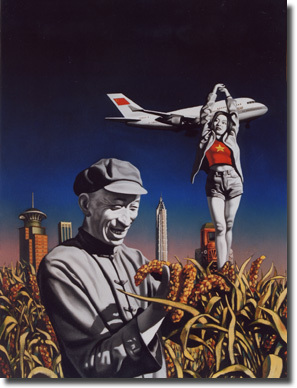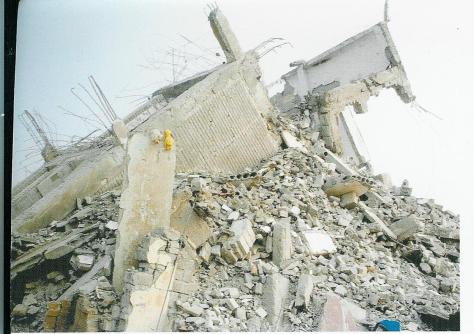But perhaps more than the facts of contemporary architecture itself (interesting enough), I find artistic engagement with the built environment to be one of the most compelling in China right now. Contemporary artists whose language is even in part urban imagery have at their disposal a wealth of chronotopic possibility that is, because of China’s scale and pace of development, unprecedented. Zhong Biao, whose work I’ve mentioned elsewhere in this blog and whose success depends in large part on how he is able to provide acutely real and yet highly stylized versions of contemporary urban experience, often features buildings as ideological structures. They are “figures” of China’s modern history, whether as traditional compounds slated for demolition, skyscrapers symbolizing the arrival of new economic policy (and prosperity), or just piles of rubble, whose implications are rich but rather difficult to paraphrase. In the following, entitled “Catchers in the Rye”, a classic urban-rural contrast is in effect:
More subtly, the detritus of rapid development is first caught in his digital camera (one of the major elements of his creative process) as follows:
and then rendered, charcoal, and acrylic on canvas, in the image: “Body Temperature”
Zhong’s approach is to combine images like the recently destroyed building above and an unmade bed in striking combination. I’ve described (Yishu: Journal of Contemporary Chinese Art Vol 9, #2, pp 8-21) the effect of such juxtaposition as uncanny, as the artist manages to tap deeply and simultaneously into what is both strange and also oddly familiar. His ability to achieve such resonate combinations has a lot to do with growing up in this particular generation of China’s urban development.


